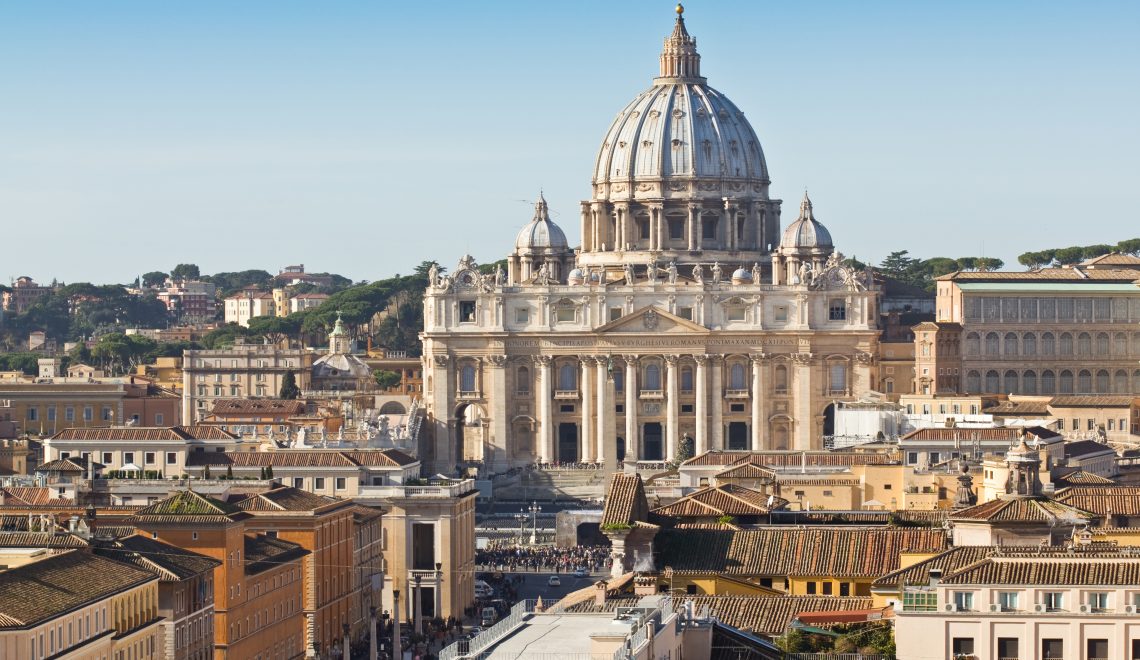
Discover the ten most fascinating places in Friuli Venezia Giulia: Trieste, the giant cave, Udine, the lakes of Fusine, Cividale, Pordenone, Gorizia, Aquileia, Lignano Sabbiadoro and Carnia
Friuli Venezia Giulia is a region that surprises because it has everything: sea, rivers, cities of art, lakes, mountains, good food, and excellent wine. It’s the ideal destination for those who love nature and art. Italo takes you to discover one of Italy’s most beautiful offbeat destinations, little known to mainstream tourism and therefore ideal for visiting the wonders of its territory without queues or crowds.
Ready for adventure? Let’s discover together ten places to visit in Friuli Venezia Giulia:
- Trieste: the port, the Roman theater and the Castle of Miramare
- The giant cave in the Trieste Karst
- Udine and traditional Friulian cuisine
- The Fusine lakes in the Julian Alps
- Cividale del Friuli: the Devil’s Bridge
- Pordenone, the Noncello river and the nearby historic villages
- Gorizia, Collio and Friulian wines
- Aquileia: the Roman city, a UNESCO World Heritage Site
- Lignano Sabbiadoro: Sabbiadoro Beach, Pine Forest and the Riviera.
- Carnia: Lake Sauris and the Forni di Sopra
1. Trieste: the port, the Roman theater and the Castle of Miramare
Trieste is a regional capital and is mainly linked to the sea thanks to its large major port. It’s a frontier town dominated by Art Nouveau architecture, with a romantic character and home to famous writers such as Svevo and Joyce. In terms of geography, it extends over several hills and overlooks the sea. The historic center is full of Art Nouveau buildings, squares, and a lively nightlife scene. A living city where the quality of life is very high. In addition to all this, Austro-Hungarian, Slovenian, and Roman influences testify to the history that the entire region has experienced, fought over for centuries by various powers. A visit to the Roman Theatre in the old town and a stop at the mid-19th century Miramare Castle are not to be missed. Italo takes you to Trieste by high-speed train thanks to many direct connections from many Italian cities: buy your ticket, get on board, and set off to discover this city rich in greenery and history.

2. The giant cave in the Trieste Karst
Visiting Trieste is an essential stop on this trip, but a day should also be dedicated to a breathtaking hike in the Trieste Karst. It’s a plateau consisting mostly of limestone or carbonate rock between Friuli Venezia Giulia, Slovenia, and Croatia. Numerous battles took place during the First World War, and you can still see the evidence of the conflict today. One of the most visited and fascinating places in the Trieste Karst is the Grotta Gigante, a huge karst cave that is open to visitors. The hidden immensity of the Giant Cave makes for an exciting and unique underground experience. Various routes can be followed, but visits are limited in number, so it is best to book a guide and the route best suited to your needs in advance.

3. Udine and traditional Friulian cuisine
Udine, a wonderful city that enraptures you thanks to its historical center, a medieval town enriched by majestic stately buildings in the Venetian Gothic architectural style. Udine is famous for its quality of life, traditional Friulian cuisine, the Castle where the Civic Museums are housed, and the Patriarchal Palace, which houses the Tiepolo Galleries. Udine is also a university town on a human scale and can be visited in a day. Don’t miss a stroll through the historic center, full of taverns and typical restaurants, where you can taste and drink excellent tajur, an excellent wine from Friuli. Near Udine, San Daniele, the city of raw ham, is very famous throughout Italy. Getting to Udine with Italo is super easy: buy your modifiable Low-Cost ticket in advance and save. Discover all the promotions on deals and trains to Udine station and travel at the best price.

4. The Fusine lakes in the Julian Alps
In the Julian Alps, one place not to be missed for any reason whatsoever are the Fusine Lakes. This is a magical and enchanting place in the municipality of Tarvisio, in the province of Udine, a few kilometers from the Slovenian border under Mount Mangart. The distinguishing feature of these lakes is their crystal clear water of glacial origin: they are two small lakes, Lago Superiore and Lago Inferiore, located in the protected area of the Fusine Lakes Nature Park. A day dedicated to visiting the lakes will delight everyone who relishes close contact with nature. In summer, you can walk around the shore of both lakes on a very easy trail. Adventure lovers can visit the Zacchi Refuge and Ponza Hut, splendid vantage points from which the entire valley can be admired. An experience immersed in nature that will leave you speechless.

5. Cividale del Friuli: the Devil’s Bridge
Cividale del Friuli is a real gem of the Natisone Valleys. The city was founded in Roman times in II B.C. by Julius Caesar and over time, became an important center of the Lombards and the seat of the Patriarchate of Aquileia. It was one of the most important and influential cities in the entire region until 1700 and today is a UNESCO World Heritage Site. Visit the Lombard Temple, Celtic Hypogeum, Christian Museum, National Archaeological Museum, and the Devil’s Bridge that crosses the Natisone River, one of the city’s landmarks, built in 1442. From Cividale, you can set out to explore the important Natisone Valleys nature area, where you can walk thematic trails featuring nature and art in history. Don’t miss the Gadda Trail and the Trail of 44 Votive Churches.

6. Pordenone, the Noncello river and the nearby historic villages
Depart with Italo and visit Pordenone in one day! This small town in Friuli Venezia Giulia is located on the border with Veneto and is one of the most interesting medieval towns in Italy. Its history is linked to the famous Noncello river that runs through the whole city. The old town center features the ancient Town Hall and numerous stores on Corso Vittorio Emanuele II. Pordenone’s surroundings are also rich in history and culture, and a visit to the nearby villages is a must. One of the region’s most beautiful cities of art worth visiting is the town of Spilimbergo, where the prestigious Friuli Mosaic School is based. Also worth visiting are Cordovado, Sacile with its Venetian architecture and Renaissance palazzi, San Vito al Tagliamento with its medieval charm, and Sesto al Reghena, famous for the splendid Benedictine abbey of St. Maria in Sylvi. What are you waiting for? Climb aboard one of the trains to Pordenone offered by Italo and set out to discover this wonderful city!

7. Gorizia, Collio and Friulian wines
Another important destination in Friuli is Gorizia, in the eastern part of the region, on the border with Slovenia.Gorizia is a city with Italian, Germanic and Slovenian influences. The great painter Max Klinger described it as “The most beautiful open door to Italy”!This city, through which flows the River Isonzo, is cloaked in a unique atmosphere woven from many different traditions. Gorizia, a historic point of contrasts and conflicts, is a blend of the greatest European cultures, and this is reflected in its streets, squares, clubs, and food. The city hosts numerous events that showcase the world’s culinary delights, the most famous and prominent being Gusti di Frontiera, held in September. The Collio hill region that surrounds the city produces famous Friulian wines such as Collio Bianco DOC, Ribolla, Tocai, and Sauvignon Blanc. Thanks to the local microclimate, these lush vineyards give fruit to these white wines that are the best in the world, and this is a real pride of the region.

8. Aquileia: the Roman city, a UNESCO World Heritage Site
The ancient Roman colony of Aquileia, founded in the 2nd century BC, is a UNESCO World Heritage Site. Its Basilica is a must-see for anyone visiting Friuli Venezia Giulia. Inside, you can admire the largest and oldest floor mosaicin the world. It dates back to the 4th century and depicts scenes from the Old Testament. All around the Basilica you can visit archaeological remains dating back to the Roman Empire such as the ancient Roman forum and river port. Aquileia is near Grado, a much-loved seaside resort that has been awarded the Blue Flag for quality.

9. Lignano Sabbiadoro: Sabbiadoro Beach, Pine Forest and the Riviera.
One of the most famous seaside resorts overlooking the Adriatic Sea in Italy is undoubtedly Lignano Sabbiadoro. Also this resort was awarded the Blue Flag, and many locals and tourists flock to it every year. There are several equipped bathing establishments and a wealth of activities and events for all. Lignano is divided into three areas: Sabbiadoro is ideal for families and children thanks to many play facilities, supermarkets and shops. The Pine Forrest, Pineta, is more suitable for young people because it offers a lot of fun thanks to the many discos and famous nightclubs. The Riviera, on the other hand, is the quietest area for those who love to relax surrounded by nature.

10. Carnia: Lake Sauris and the Forni di Sopra
For those who love nature and the mountains, Carnia is the destination par excellence when you arrive in Friuli Venezia Giulia. Carnia is an area located in the Carnic Alps, in the north of the region and on the border with Austria. In this wonderful part of Friuli there are many activities to enjoy, and it is perfect in every season of the year. In summer excellent for trekking and long walks surrounded by nature, from Sarius and its lake, hence the name, to Forni di Sopra with the Dolomites-a trail that crosses rivers and streams with breathtaking views. In autumn, the colorful landscapes give the visitor real postcards that highlight the many beautiful villages. In winter, it is a very interesting area for winter sports in ski resorts such as Zoncolan and Pramollo.

Getting to Friuli Venezia Giulia with Italo
Friuli Venezia Giulia is a region suitable for every traveller! From the Alps to the sea, from culture to history, traveling with Italo in Friuli is an experience that will make you spend unforgettable days… in any month of the year. The high speed of Italo offers direct connections to Friuli Venezia Giulia from many Italian cities: buy your ticket and get on board. Discover the destinations and timetables of the trains and all the routes of Italo.




